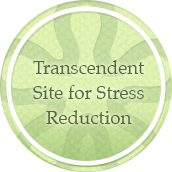Start with your back to the wall
Feeling twisted out of shape isn’t fun, nor is it pleasant to find yourself all tied up in knots. But here’s a yoga paradox: the more strongly we twist, the more we unwind.
Rotated triangle pose is an intense twist, but at the beginning less of our attention goes to twisting than to maintaining balance. Take it to the wall and you can deepen the twist with good alignment. Once you’ve learned how that feels, you can recapture it in the full pose without the wall.
To go further, have a brick between your front foot and the wall. Once you have the twist in your ribcage, slowly slide your hand down the wall to reach the brick.
Rotate to the right, bringing your hips to face forward
To begin, stand with your back to the wall, feet three to three and a half feet apart. Bring your pubic bone parallel to the wall in front of you. Lift your thighbones up toward your hip sockets.
Draw your shoulder blades down.
Now rotate your right foot and thigh 90 degrees to the right, and your left foot and thigh enough to bring your hip bones parallel to the wall in front of you.
Lengthen your left calf muscle to bring your left heel to the floor.
Press down into your left outer heel.
Lift both thighbones and press them back. Inhale and lift your ribcage. Roll your shoulder blades down your back. Now firm your back thigh, exhale and rotate toward the wall. Place your hands on the wall.
With your inhalations, lift your thighbones toward your hip joints. With your exhalations, keep your legs firm as you rotate your ribcage to the right.
Make sure your pubic bone is still lifting toward your navel. Squeeze your thighbones tightly toward the centre of your hip sockets. Continue to rotate your left ribcage to the wall.
Bring your hands to the wall
Hold for two or three soft, even breaths, then release, and bring your feet to face forward.
Check that your feet are still parallel, then repeat on the left side.
Benefits: Rotated triangle tones the thigh, calf and hamstring muscles, expands the chest, invigorates the abdominal organs and strengthens the hip muscles. Working with the full pose improves your balance.
Taking the pose to the wall lets you work the actions of the pose without fighting for balance.
Sequence: If you are a beginner, try this preparation on its own, whenever you need to refresh and untangle your mind and body. In a longer practice, place it after triangle pose and before the rest of your standing poses.
In a more mature practice, use this preparation before you work with rotated triangle, and take what you learn at the wall into the pose. You can also use this preparation to warm up before seated closed twists such as Ardha Matsyendrasena and Marichyasana III.
Ouch: Although this is a gentle preparation for the full pose, if you have a back injury, check with your teacher before you try it. Do not practice rotated triangle pose if you are menstruating or pregnant.
Sanskrit Corner: Say: par-ee-vrit-tah trik-cone-AH-sanna. Parivrtta means
to turn around, to revolve. Tri means three, kona means angle, asana means pose.

Comments on this entry are closed.
Hey Traci,
Good to hear from you.
Wow indeed on the outer hips. Somehow the support of the wall lets me settle in and enjoy the ride.
I’d never tried paravritta trikonasana prep like this before. It was challenging to get the twist… then, I found slowly ‘walking’ my hands down the wall helped to keep the length of the spine and examine what was going on all the way down… Outer hips. Wow.